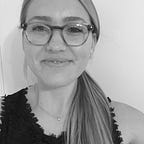How BOPO workouts helped me find joy
Turns out, working out is fun
It’s around this time of year that people start ramping up the ‘bikini body’ talk. Top of this game plan are new (or newly intense) diet and exercise routines. While it’s great to want to improve your health, it’s also important to remember failing these goals is not you… it’s diet culture and body shaming, something that the Body Positive (BoPo) movement actively works against.
During the pandemic, my workout routine was upended like many. Though there were jokes about the quarantine-15 (61% of American adults reported weight gain during lockdown according to the American Psychological Association), I still felt guilty about my weight gain.
Slowly I started with online workouts on like Youtube’s number one female fitness channel with 5.9 million subscribers Blogilates, run by Cassey Ho, and fitness influencer Chloe Ting, as well as paid services but I always somehow felt like a failure despite their you-can-do-it affirmations. Their language never entailed the word ‘fat’ but my brain still heard it. My self-hatred was deeply ingrained no matter how much my weight changed.
In some videos, the super lean instructors would have a couple other people — someone pregnant, or a person of color, or a slightly heavier-set body. These were the bodies used to show low-impact modifications in a movement, as if fat and fit were mutually exclusive. Though no one could see me, I still felt extremely self conscious.
I wasn’t realizing that part of it was because their bodies looked nothing like mine.
This feeling of discomfort led me to The Body Positive, an organization started by Connie Sobczak and Elizabeth Scott in 1996 that aims to “imagine a world where people in all bodies are able to reclaim their health, beauty, and confidence to live full, happy lives.” One of their suggestions is to diversify the accounts you follow on social media. My eyes suddenly noticed what I’d been passively consuming for most of my life, but now was in my ever-present phone, near constantly inputting these images in my brain of what I thought my body had to look like. Not the mainstream view, it takes effort to form new ideas about the body and create or find community.
Challenging myself to fill my social media feed with different bodies, I came across Instagram accounts like BodyPosiPanda, also known as Megan Jayne Crabbe, a fat activist and eating disorder survivor. Writer and social justice activist Sonya Renee Taylor penned The Body is Not an Apology, and created a movement around “promoting radical self-love and body empowerment as the foundational tool for social justice and global transformation.” Actress Jameela Jamil started the I Weigh community after people started comparing their weight to the Kardashian sisters, emphasizing that we are so much more than a number on the scale. Other organizations like Dr. Lindo Bacon’s Healthy at Every Size (HAES) emphasizes respect, critical awareness, and compassionate self-care.
Bacon states, “Few of us are at peace with our bodies, whether because we’re fat or because we fear becoming fat.”
The Body Positive movement, and live online classes that celebrated bodies like mine, and moves that were motivated by joy — not calorie-burning — I realized the issue was not me, or my body, but the calcified concept of what healthy looks like. Here in BoPo classes and communities were people with full lives and full bodies.
Simply seeing bodies closer to my own size and shape helped me lessen the amount of negative self-talk in my head. It took time for me to actually commit to live Zoom workout classes after I found body positive gyms offering online options. Fear of diet talk, or the standard rhetoric around bikini bodies, made me hesitant.
At first, I kept my camera off. I followed along, signed off at the end, and went on with my day. What started shifting was this sense of safety. It kept growing each time I showed up. Most people in class kept their cameras on during the entire workout. I was in awe with their ability to feel comfortable not only having their full body on camera, but moving and sweating– and enjoying every minute.
Eventually, one day, I turned my camera on. I danced and squatted and smiled for everyone to see. The world didn’t end. No one pointed and laughed.
Dancing on camera with bodies similar to mine in a no-shame zone promotes the desire to exercise for the mental health benefits. For the first time in my life, I felt a sense of community, one in which my body wasn’t the odd one out. But make no mistake, the body positive spaces are not a kind of fat camp where everyone wants to lose weight and swaps diet tips. It’s a place for bodies of all sizes, including smaller and disabled, to focus on feeling connected — to their own bodies, to humanity.
Let’s not forget that all bodies are good bodies. Let’s embrace all bodies and get back to what’s important: moving.
By not worrying about what my body looked like, how it jiggled or that my belly was showing, I could be more present in my body and feel connected through movement. Through the body positive community, I found joy.
